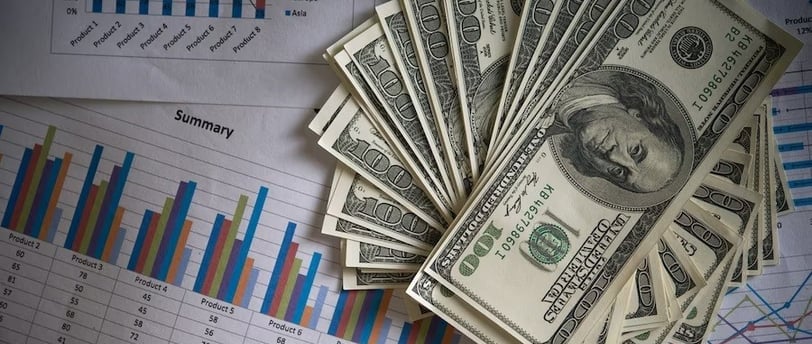Add your promotional text...
The Dollar's Resilience: Why the Greenback Remains Strong in a Shifting Economic Landscape
Synopsis: Despite expectations of long-term weakening, the U.S. dollar remains resilient, reaching new year-to-date highs. Analysts attribute this strength to a more hawkish Federal Reserve and shifting global economic dynamics. While challenges for the euro persist, forecasts suggest eventual recovery, signaling a complex interplay of monetary policy and macroeconomic factors in the currency markets.
FOREX
By Sonal Chauhan
12/22/20243 min read


The Dollar's Persistent Strength: A Closer Look at the Drivers
In a world of fluctuating exchange rates, the U.S. dollar (USD) has defied expectations, reaching fresh year-to-date highs against its major counterparts. This unexpected resilience has prompted analysts, including those at UBS, to revise their outlook on the greenback. While they maintain that the dollar may weaken in the long term, they now anticipate less pronounced softness through 2025.
So, what’s fueling the dollar’s persistent strength? Key factors include a more hawkish Federal Reserve stance, reduced expectations for U.S. rate cuts, and global economic uncertainties that favor the dollar as a safe-haven currency.
A Hawkish Federal Reserve: The Driving Force Behind the Dollar
At its December meeting, the Federal Reserve signaled a more hawkish approach to monetary policy, citing concerns about inflation and a robust U.S. labor market. This stance has tempered expectations of aggressive rate cuts in the coming years.
Fewer Rate Cuts Ahead: The prospect of fewer rate cuts has bolstered the dollar’s appeal, especially as other central banks face pressures to ease monetary policy.
Tariff Risks and Geopolitical Factors: Analysts from UBS also point to tariff risks as another factor driving the dollar’s strength, further underscoring its role as a safe-haven asset during periods of uncertainty.
The Euro Under Pressure: Navigating a Challenging Landscape
One of the currencies most affected by the dollar’s strength is the euro (EUR). The EUR/USD exchange rate has been particularly sensitive to the divergence in economic conditions between the U.S. and Europe.
Near-Term Outlook: UBS analysts predict that the euro will hover around $1.05 against the dollar during the first half of 2025. However, they caution that a dip toward parity cannot be ruled out, particularly if tariff risks escalate or if economic conditions in Europe lag behind those in the U.S.
Hopes for Recovery: Despite these challenges, analysts remain optimistic about a recovery in the euro during the latter half of 2025. Improved economic data from Europe and a narrowing of yield differentials between the U.S. and Europe are expected to provide support for the EUR/USD exchange rate.
A Return to Balance: The Long-Term Outlook for EUR/USD
While the euro faces near-term headwinds, UBS analysts believe that the currency pair will eventually stabilize and return to higher levels.
Yield Differentials: The narrowing of two-year yield differentials between the U.S. and Europe is seen as a critical factor in supporting the euro.
Economic Improvement in Europe: Expectations for better macroeconomic data in Europe during the second half of 2025 suggest that the euro could climb back into the $1.08 to $1.10 range.
Implications for Global Markets
The dollar’s continued strength and the euro’s challenges reflect broader dynamics in global financial markets. For investors, businesses, and policymakers, understanding these trends is essential for navigating the complexities of international trade and investment.
Investors: The strong dollar offers opportunities for those holding dollar-denominated assets but presents challenges for emerging markets reliant on foreign capital.
Businesses: Exporters in the U.S. may face headwinds from a stronger dollar, while European exporters could benefit from a weaker euro in the near term.
Policymakers: Central banks in Europe and elsewhere must carefully balance the need to stimulate growth with the risks of further currency depreciation.
Navigating a Dynamic Currency Landscape
The dollar’s unexpected resilience and the euro’s struggles highlight the intricate interplay of monetary policy, economic fundamentals, and geopolitical factors in shaping currency markets. While the greenback’s strength may persist in the short term, the long-term outlook suggests a more balanced trajectory as global economic conditions evolve.
For now, the U.S. dollar remains a dominant force in the global economy, reflecting its role as a safe-haven currency and a benchmark for stability in an uncertain world. As we move into 2025, the path of the dollar and its rivals will continue to be shaped by the delicate dance of policy decisions, market sentiment, and economic realities.
